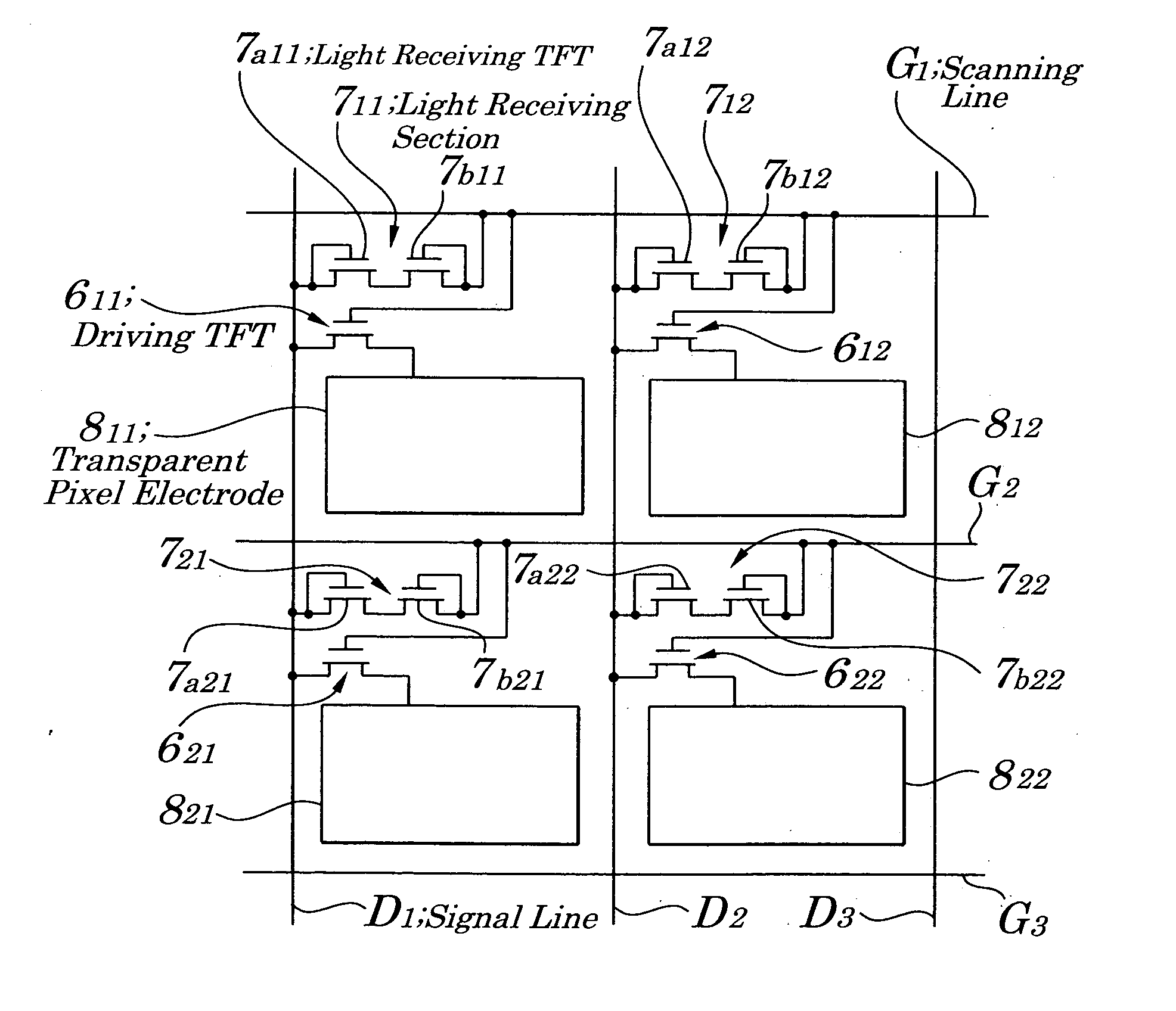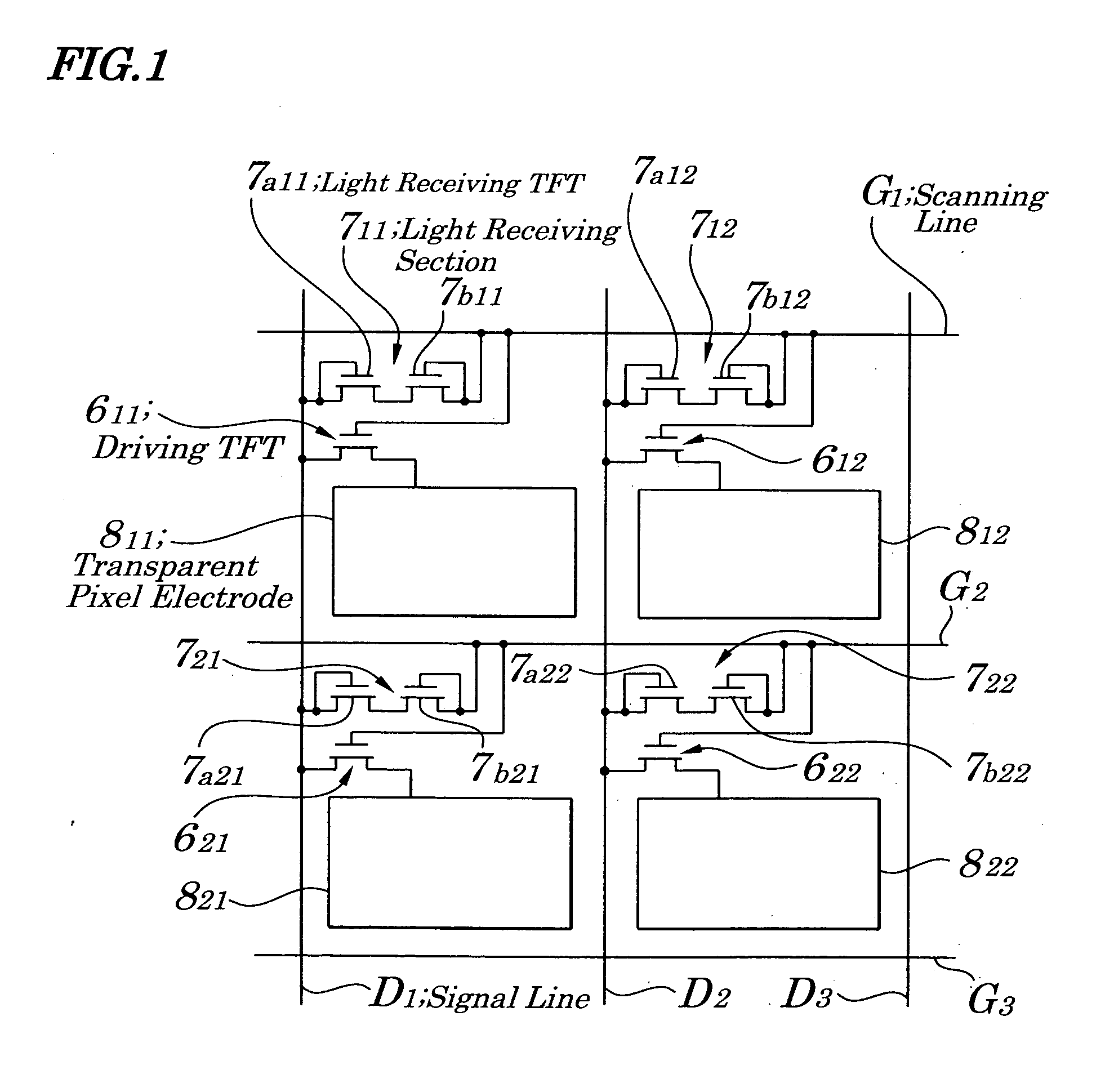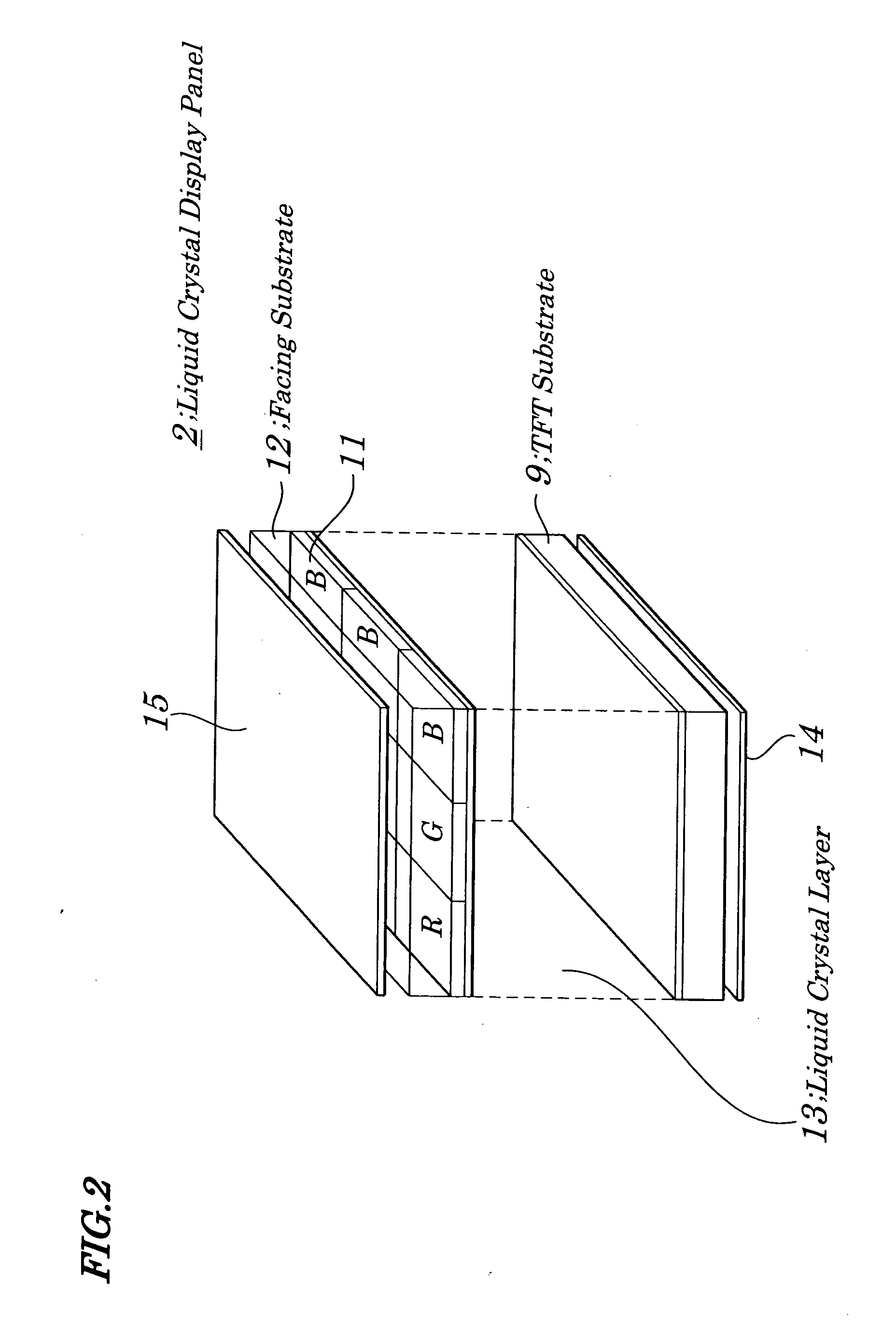Liquid crystal display device with tablet function
a technology of liquid crystal display device and tablet, which is applied in the direction of user-computer interaction input/output, instruments, computing, etc., can solve the problems of affecting the use of tablet pc as a whol
- Summary
- Abstract
- Description
- Claims
- Application Information
AI Technical Summary
Benefits of technology
Problems solved by technology
Method used
Image
Examples
first embodiment
[0046]FIG. 1 is an equivalent circuit diagram showing electrical configurations of a liquid crystal panel of the first embodiment of the present invention. FIG. 2 is a perspective view schematically showing configurations of the liquid crystal panel of FIG. 1. FIG. 3 is a cross-sectional view schematically showing configurations of the liquid crystal panel of FIG. 1. FIG. 4 is a schematic block diagram showing electrical configurations of a liquid crystal display device using the liquid crystal display panel of FIG. 1. FIG. 5 is a plan view showing configurations of a TFT substrate used in the liquid crystal display panel of FIG. 1. FIG. 6 is a cross-sectional view of the liquid crystal panel of FIG. 1 taken from a line A-A in FIG. 5.
[0047] The liquid crystal display device 1 of the first embodiment is used, for example, as an inputting device or displaying device for a tablet PC and includes, as shown in FIGS. 2 to 4, a liquid crystal display panel 2, an LCD (Liquid Crystal Displa...
second embodiment
[0070]FIG. 7 is an equivalent circuit diagram showing electrical configurations of a liquid crystal panel of the second embodiment of the present invention. FIG. 8 is a plan view showing configurations of TFTs of the liquid crystal display panel of FIG. 7. FIG. 9 is a cross-sectional view of the liquid crystal panel of FIG. 7 taken from a line B-B in FIG. 8. Configurations of the second embodiment differ greatly from those of the first embodiment in that its light receiving section is made up of a pair of light receiving TFTs in which gate electrodes are connected to each other. Other configurations other than above are approximately the same as those in the first embodiment described above and their descriptions are omitted accordingly.
[0071] In the second embodiment, on the TFT substrate 41 are formed a plurality of transparent pixel electrodes 4211, 4212, . . . , in a matrix form and, in an area surrounding each of the plurality of transparent pixel electrodes 4211, 4212, . . . ...
third embodiment
[0077]FIG. 10 is an equivalent circuit diagram showing electrical configurations of a liquid crystal panel of the third embodiment of the present invention. Configurations of the third embodiment differ greatly from those of the first embodiment in that each of light receiving section TFTs is made up of a single light receiving TFT and each of the light receiving TFTs is connected to signal lines and to each of light detecting wirings provided in parallel to the scanning lines, instead of the scanning lines used in the first and second embodiments. Configurations other than above are approximately the same as those in the first embodiment described above and their descriptions are omitted accordingly.
[0078] As shown in FIG. 10, on the TFT substrate 41 of the embodiment are formed a plurality of transparent pixel electrodes 611, 6112, . . . , in a matrix form and, in an area surrounding each of the plurality of transparent pixel electrodes 6111, 6112, . . . , are provided each of th...
PUM
 Login to View More
Login to View More Abstract
Description
Claims
Application Information
 Login to View More
Login to View More - R&D
- Intellectual Property
- Life Sciences
- Materials
- Tech Scout
- Unparalleled Data Quality
- Higher Quality Content
- 60% Fewer Hallucinations
Browse by: Latest US Patents, China's latest patents, Technical Efficacy Thesaurus, Application Domain, Technology Topic, Popular Technical Reports.
© 2025 PatSnap. All rights reserved.Legal|Privacy policy|Modern Slavery Act Transparency Statement|Sitemap|About US| Contact US: help@patsnap.com



